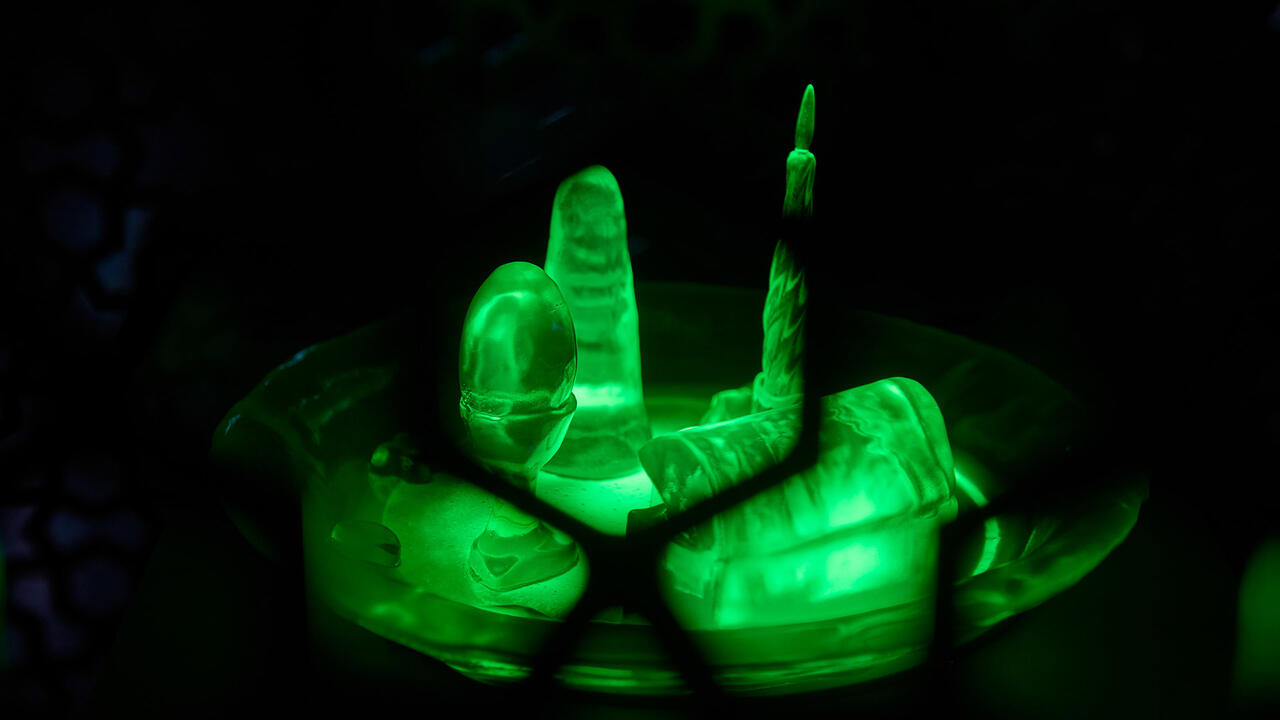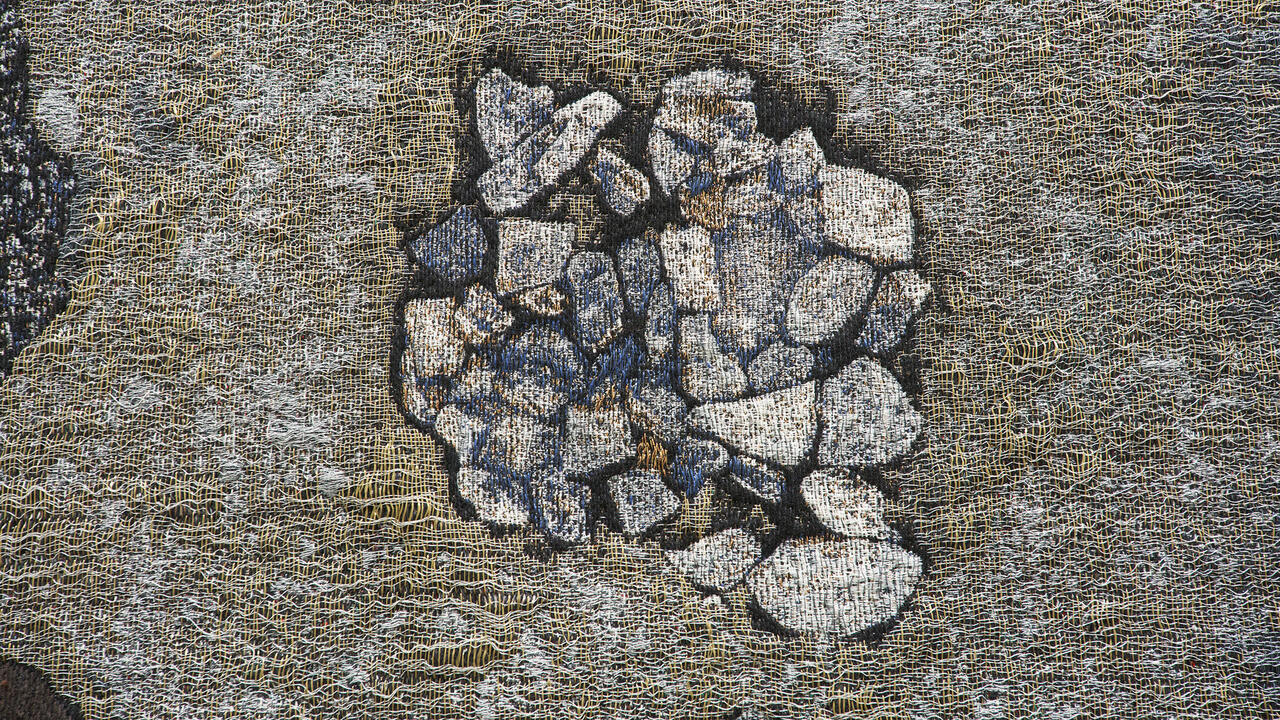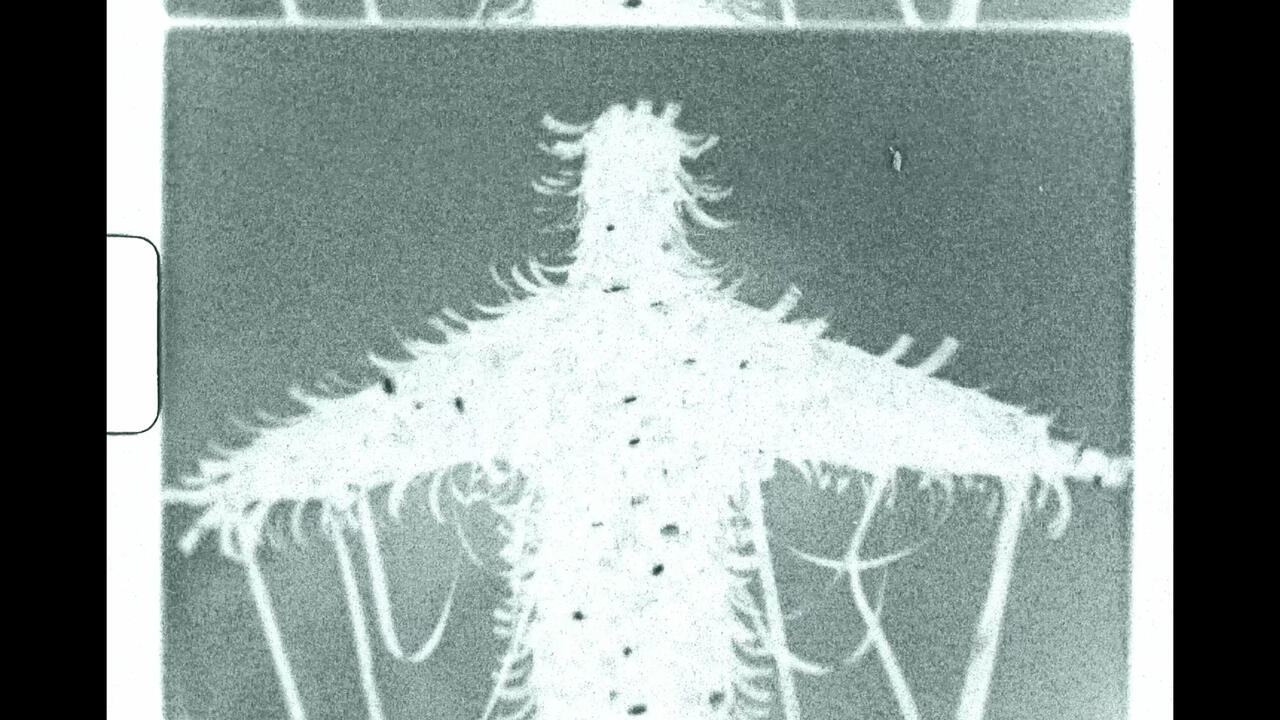The Textile Anthropology of Sheila Hicks
A show at Alison Jacques highlights the artist’s technical prowess and use of colour, but lacks critical discussion of her processes
A show at Alison Jacques highlights the artist’s technical prowess and use of colour, but lacks critical discussion of her processes

The tactility of Sheila Hicks’s textile works – from delicate, wall-mounted weavings to squishy, room-filling installations – provides a neat counterpoint to the crispness of Alison Jacques’s new space. The main, ground-floor gallery allows plenty of room for visitors to encounter works that traverse multiple scales and materials. The selection, which ranges from 2009 to 2023, showcases the artist’s technical innovation and glorious way with colour. For example, stretching nearly five metres along one wall, Talking Sticks (2021–23) consists of dozens of bamboo batons wound with multicoloured lengths of linen, cotton, silk and nylon. In contrast, older works on a more intimate scale, such as Fimbria (2018), incorporate surprising materials including slate, feathers and razor clam shells. Complex entanglements of elements draw you in: Mirage in the Oasis (2023), for instance, is a gorgeous mix of threads in pistachio green, fleshy pinks and gold.

Downstairs, in the smaller basement spaces, the meeting of art and architecture is less successful. The sound from Cristobal Zanartu’s film of Hicks’s life, Opening the Archives (1995), while informative, spills out across the spaces, disrupting one’s engagement with the works. Together Is Better (2023) is a cluster of wall-mounted domes, formed from threads of varying thickness in linen, cotton and wool, whose subtle variations of pale cream tones would benefit from a quieter environment. Nearby, Veils I–IV (2023), made from dried woven Ethiopian grass, hang beautifully from the ceiling, dividing the space with precision. Yet, this small gallery contains too many other works to afford the Veils’ delicately crumpled, almost topographical surfaces the space for contemplation they deserve. But the exhibition’s most visually impactful moment is the titular Infinite Potential (2023). You walk around the corner from the main space to be surprised by a huge, looming pile of multicoloured pouffy blobs, which reaches almost eight metres in height. It’s dramatic, memorable and fun.

Narratives around Hicks’s work tend to tread familiar terrain. Throughout her career, she has insisted on the importance of textiles and craft when much of the fine art world was largely uninterested. Emphasising the importance of collaboration to the artist, these narratives often focus on Hicks’s own handiwork. Both Zanartu’s film and the catalogue published to accompany Hicks’s major 2022 exhibition, ‘Off Grid’, at The Hepworth Wakefield, discuss in detail a 1960 photograph of the artist working on a backstrap loom near Mitla, Mexico. The other adult figure in the photograph, a woman weaving right next to Hicks, is not acknowledged in either account. This risks erasure: besides several (mostly male) architects, Hick’s ‘collaborators’ are rarely named.
In the same catalogue, curator Andrew Bonacina underlines the artist’s ‘global travels’ as a key influence upon her work over the past eight decades. According to Bonacina, Hicks travelled ‘as a textile anthropologist: collaborating, learning, observing, interpreting’. The analogy with anthropology is telling. As Grant Klarich Johnson wrote in The Brooklyn Rail in 2018: ‘Hicks cut her teeth in a proto-feminist art world long before charges of cultural appropriation questioned who could speak for whom, and has never mobilized her work as a vehicle for explicit critique.’

I feel a more rigorous discussion that included reflection on Hicks’s positionality in relation to her eclectic influences, which include Mexican textile traditions and pre-Inca cultures, would not detract from her work’s significance – it would enrich it. ‘Infinite Potential’ does not take the opportunity to develop such a discussion. Although most of the works included are new or recent, the exhibition repeats familiar narratives: the formative influence of early mentors; Hicks’s many collaborations with architects; and the importance of travel, especially in South America. The show presents a wealth of elegant objects, but leaves me with a desire for more criticality surrounding their conceptual and material formation.
Sheila Hicks: Infinite Potential is on view at Alison Jacques, London, until 18 November 2023
Main image: Sheila Hicks, Talking Sticks (detail), 2021–23, linen, cotton, silk, nylon, bamboo, 2.8 × 4.9 cm. Courtesy: Alison Jaques, London; photograph: Michael Brzezinski





















